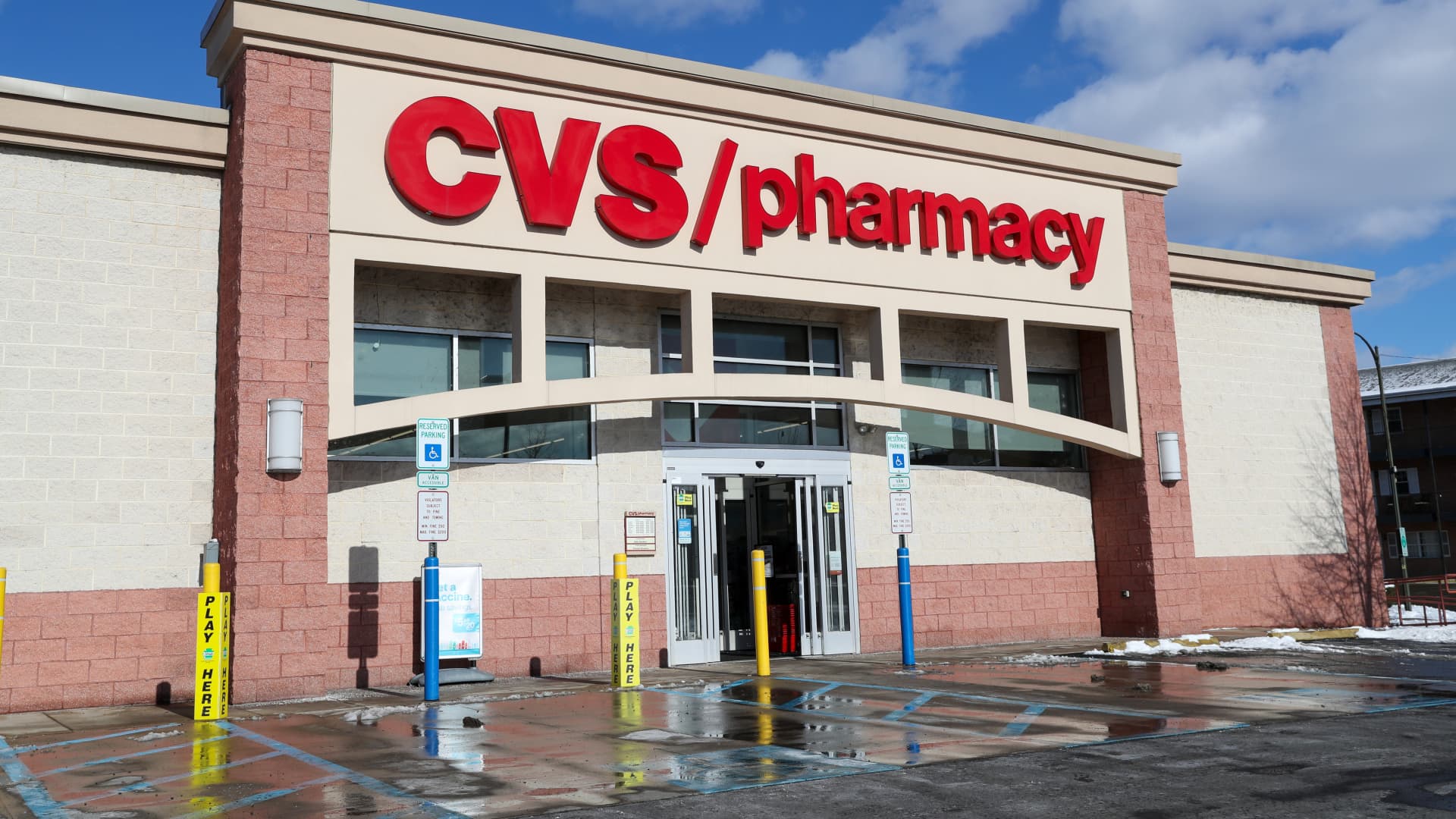

CVS Health announced on Wednesday that its fourth-quarter revenues and earnings surpassed forecasts, even as its insurance division faces ongoing challenges from increased medical expenses.
The company also released its adjusted earnings forecast for the full year 2025, anticipating a range of $5.75 to $6 per share, aligning with analysts’ predictions. However, CVS did not provide a revenue estimate for the coming year.
This marks the conclusion of the first full quarter under the leadership of David Joyner, a seasoned CVS executive, who stepped in as CEO following Karen Lynch’s departure in mid-October. Joyner is tasked with steering the struggling retail pharmacy giant towards improved profitability and enhancing stock performance.
As part of its broader recovery strategy, the company has initiated a management overhaul that includes plans for $2 billion in cost reductions over the next few years. CVS is contending with escalating expenses within its insurance sector, Aetna, along with a retail pharmacy operation affected by diminished consumer spending and reduced prescription drug reimbursements.
Here’s a comparison of CVS’s fourth-quarter performance against Wall Street expectations based on an analyst survey by LSEG:
- Earnings per share: Adjusted at $1.19 vs. $0.93 projected
- Revenue: $97.71 billion vs. $97.19 billion anticipated
Following these results, shares experienced a rise of over 6% in premarket trading.
Both CVS and other insurers, including UnitedHealth Group and Humana, have witnessed significant spikes in medical expenses over the past year as a greater number of Medicare Advantage patients return to hospitals for treatments they postponed during the pandemic.
The Medicare Advantage plans, which are privately managed health insurance options under Medicare, have historically served as a significant growth driver for insurers. However, rising concerns among investors about soaring costs linked to these plans, which serve over half of all Medicare recipients, are emerging.
CVS reported quarterly sales of $97.19 billion, reflecting a 4.2% increase compared to the same quarter last year, driven by advances in its pharmacy sector and insurance division.
The company declared a net income of $1.64 billion, or $1.30 per share, for the fourth quarter, a decrease from a net income of $2.05 billion, or $1.58 per share, during the same period last year.
When adjusted for certain items, including the amortization of intangible assets, restructuring costs, and capital losses, the adjusted earnings for the quarter stood at $1.19 per share.
CVS noted that its fourth-quarter earnings were impacted by rising medical costs within its insurance division, along with lower star ratings for Medicare Advantage for the 2024 payment year, both of which adversely affected the operating outcomes of that segment. Star ratings are used by Medicare beneficiaries to gauge the quality of health and drug plans.
Challenges in the insurance division
All three business sectors of CVS exceeded Wall Street’s expectations in the fourth quarter.
The insurance segment generated $32.96 billion in revenue during the quarter, marking an increase of over 23% from the fourth quarter of 2023. Analysts had anticipated revenues of $32.89 billion for this segment according to StreetAccount estimates.
However, this division reported an adjusted operating loss of $439 million for the quarter, in contrast to an adjusted operating income of $676 million during the same period last year. This decline can be attributed to heightened medical expenses and the impact of the Medicare Advantage star ratings.
The medical benefit ratio for the insurance segment—reflecting the total medical expenses relative to collected premiums—rose to 94.8%, up from 88.5% a year prior. A lower ratio typically indicates a healthier profitability scenario for a company.
The fourth-quarter ratio was also lower than the expected 95.9% based on estimates from StreetAccount.
CVS’s health services sector achieved $47.02 billion in revenue for the quarter, although this represented a decline of over 4% compared to the same quarter last year. Analysts had projected this unit to post sales of $44.06 billion for the period, according to StreetAccount.
This segment includes Caremark, one of the largest pharmacy benefits managers in the U.S. Caremark is responsible for negotiating drug discounts with manufacturers for various insurance plans and overseeing lists of medications that are covered by insurance as well as reimbursing pharmacies for dispensed prescriptions.
During the quarter, CVS’s health services division handled 499.4 million pharmacy claims, a decrease from 600.8 million claims during the previous year’s quarter, primarily due to the loss of a significant unnamed client. Tyson Foods revealed to CNBC in January 2024 that they switched from CVS to a different pharmacy benefit manager for their approximately 140,000 employees, although it remains uncertain if any other firms also ended their relationships with CVS throughout the year.
In its pharmacy and consumer wellness division, CVS reported $33.51 billion in sales for the fourth quarter, reflecting an increase of more than 7% from the same period last year. Analysts had anticipated sales of $33.03 billion for the quarter, according to StreetAccount.
This unit comprises over 9,000 CVS retail pharmacies and provides additional services such as vaccinations and diagnostic testing.
The growth in sales was partly driven by an uptick in prescription volume. However, pressures from pharmacy reimbursements, the introduction of new generic medications, and a decline in sales from non-pharmacy items like pantry staples and toiletries—stemming from a reduced store count—affected overall performance in the division.









